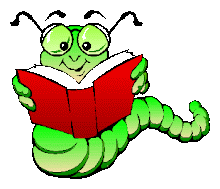Tiger by Jeff Stone
Whoosh. That’s the sound of the all the things that rush in to fill the void after the rejection of Christianity. I’m thinking of the Chesterton quote (loosely quoted) that when one doesn’t believe in God, one doesn’t believe in nothing but in everything. And that’s my biggest worry about this book… Buddhism is one answer to the pop-culture rejection of Christ.
The book has nothing objectively wrong… it is more what it lacks in fullness; it is a positive portrayal of the Buddhist religion.
There is so much universal appeal in this book of genuinely good stuff: justice as the goal of the powerful to protect the weak. Fighting as a weapon of self-defense and self-control. Peace as the goal... healing and wholeness as the objectives. This is true, universal stuff, reflected in Catholicism and Buddhism. However, in Buddhism, we get this without the Savior, and thus, without the cross, and with essential errors, such as the belief in reincarnation.
It troubles me less for the catechized Catholic child with a parent to explain the differences, than it does for a culture that has little clue to how susceptible it is to the vacuum effect.
For the orthodox: this is a fine, fictional story that positively portrays the Buddhist religion. For those of us who separate yoga/martial arts from the distinctively Eastern spiritualism/mysticism that can accompany them… you need to know that you will have to step in and make these vital distinctions apparent to your child. Here, they are attractively blended. The facts about Buddhism are accurate (as far as I can tell) and important for your children to know, but not without an atttraction that needs to be explained lest your child be caught in the vacuum.
Here is the story from the first book in the series…
A secret Buddhist temple trains warrior monks, and it has 6 special apprentice boys who are gifted in Kung Fu and are singled out by the Grandmaster for special training. They are each trained according to the specific fighting style of the animal that their body type and personality represent.
A 6th boy of this orphan group is a traitor. He turns on the Grandmaster, joins forces with the Emperor, and attacks the temple, killing all the warrior monks, while the 5 remarkable boys barely escape.
This first book focuses on one boy, the boy-warrior-monk who is like a tiger. He rescues the sacred scrolls of the temple, reunites with two of the other boys, and is confronted with idea that the Grandmaster was not who he seemed. At the end of the first book of the series, we are left to find out if the story of the Grandmaster is true, if the 5 boys can overcome the evil traitor who killed their brother-monks, and what these 5 boys, or ancestors, will pass on in knowledge to the world of their martial arts and pursuit of justice.
Add to the appeal of this narrative, a fine writing style, tight action, cool martial art moves, universal themes of justice, knowing thyself, defending the weak, and overcoming evil, and you have a potent combination… understandably popular. Which is exactly why I think the book needs parental guidance to explain the difference, and lack, between Buddhism and Christianity.
One more thing. The extent to which the boys are connected to the animal that they fight like disturbs me. Of course, the message that the animals must be treated humanely is not a problem. Even more compelling, when the monk-boy loses his temper and uses disproportionate violence to protect two tigers, he is rightly humbled and rightly apologizes to the people that he hurt in defense. In actual fact, the tigers had attacked human beings, and rightly enough, the hunters were tracking them down before they could do further damage. This gels perfectly with the Catholic understanding of human dignity and humane treatment of animals as a gift from the Lord of Creation.
It also speaks to my essential reservation with the book. The Buddhism reflects universal Catholic themes that are appealing to all of us who are made in His image, yet, because it lacks fullness of the truth, it falls short. The boy who relates to tigers, gets it right about the humane treatment of tigers, humility, and forgiveness, but he still relates so closely to the animal that it is disturbing…. Taking on the physical characteristics of the animal and having the tiger cub that fights for him, troubles me.
It reminds me of the modernist take on St. Francis, a great lover of animals who would even preach to them. But St. Francis’ orthodoxy is lost when twisted for ulterior agendas. Francis understood the difference between an animal and human soul.… inordinate affection for animals can be a problem in our society. Combined with the fact that the distinction between animal and human souls is ignorantly blurred, quite often in our times, makes me naturally cautious at the extremely close connection of the monks with their animal-counterparts in this story. I find it out-of-balance. At the same time, this monk did realize the error of his ways.
While I wouldn’t say you have to read them to discuss them, these are books that no Catholic parent should have their child explore without guidance to explain the difference between Catholicism and Buddhism...
SAFETY RATING: 2 Flags
See: Catechism of the Catholic Church: Animals.. Place in Creation: 2415; 2416; 2417; 2418


0 comments:
Post a Comment